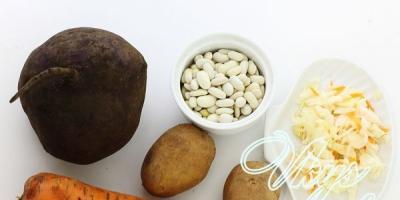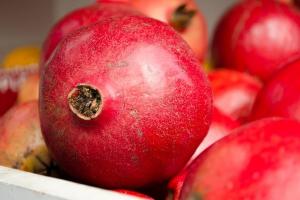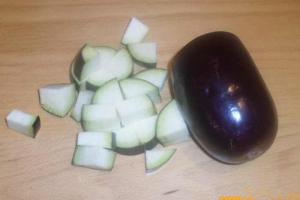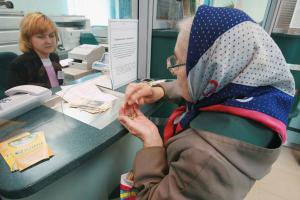Probably all gardeners and summer residents know about peat tablets. But their ratings are currently falling, and they are being replaced by coconut tablets in the life of a summer resident. What are they? These are compressed coconut fibers, in the form of flattened cylinders - tablets - and impregnated with useful substances. These tools are convenient and are a novelty of our time. Coconut tablets are suitable for growing crops and allow you to achieve good germination and get excellent sprouts for future replanting.
Composition of tablets
In this article we talk about which coconut or peat tablets are better for seedlings. First, it’s worth finding out what the composition of these tablets is. The shape, as we have already indicated, is cylindrical. The composition itself is a mixture of 70% coconut peat and about 30% coconut shavings and fiber. Peat, in turn, is shredded coconut husk. It is dried and subjected to high blood pressure. The tablets also contain useful substances necessary for plants. Note that it is used natural material without adding any chemical impurities.
Properties
Seedling tablets are in great demand today. The reason for the popularity of tablets is:
- rapid rooting of seedling growth,
- good and strong roots,
- comfortable fit.
For comparison: it is already possible to start picking fruits a week and a half earlier than if you used regular peat. In addition, the soil itself is enriched and its properties become better.
On a note! Remember the recipe useful soil. One tablet – 40 ml of lukewarm water. Wait for the water to be absorbed.
Of course, for such purposes you can also use mineral wool. But coconut tablets are preferable because they have three important advantages:
- First, they are recycled.
- Secondly, they don’t sag.
- Thirdly, no crust formation is observed.
On a note! And the tablets are saturated with air.

Experienced gardeners and gardeners know that it is important to maintain a certain level of oxygen in the soil, otherwise plants will have difficulty growing. A deficiency of this important chemical element leads to the appearance of toxic substances that worsen the quality characteristics of the soil and the level of nutrients. But let's look at the benefits in more detail.
Properties coconut tablets:
- excellent heat transfer;
- resistance to decomposition;
- water retention (liquid in tablets is reliably stored and, as needed, enters the root system);
- can maintain an optimal level of acidity (this makes it possible to grow absolutely any crops);
- prevents the emergence of pathogenic bacteria.
- good breathability (favorable air exchange is created, unhindered access useful substances and liquids to the root system);
- the presence of antibacterial substances;
- long-term – they can be used several times in a row;
- allows you to obtain high quality seedlings;
- ease of use;
- do not become limp in case of waterlogging;
- ease of transplantation.
Types of products
In this article, you should decide which is better to use - peat or coconut tablets. On the market you can see different incarnations of the coconut mixture: some are in the form of tablets, some are also in the form of mats (3x100x15 cm). The size depends on what crops you want to plant. For example, for plants with small seeds, use tablets with a diameter of about 25 mm, and for 35 mm or more - eggplant, pepper and others. This will give you the opportunity not to transplant the sprouts into large containers.
You can also see tablets with small greenhouses on the shelves. We'll talk about everything in more detail later.

Methods of use
In this section of the article it is worth talking about how to use seedling tablets. Of course, in this case, you should definitely use the recommendations below.
- Prepare the container in which you are going to grow the seedlings. It is necessary that the height be greater than the height of the tablet (including moisture, of course. This is about 15 cm;
- Rinse the tablets. We need to get rid of sea salt, which is used in their manufacture;
- Then water the container warm water(not hot!). Approximately one tablet should contain about 35-40 ml. The contents of the container should swell after some time;
- Next, make a small indentation in the upper part of it and place it there. required amount seeds Cover it with coconut fiber or peat;
- Cover the container with a sheet of polyethylene film to maintain favorable conditions;
- The resulting seedlings are transplanted into the holes, but do not remove the packaging mesh. Water and fill the holes with a small amount of soil to facilitate plant adaptation.
On a note! To root the growth of, for example, cuttings of violets and roses, you need to follow a slightly different pattern. Wet the container a little, make a hole in the center, place the cutting there. Compact the soil and cover it with some material (film, for example) to maintain moisture.
Tablets with greenhouses
Wondering what you can grow in coconut tablets? Then you can grow completely different vegetable crops in them. In this part of the article it is worth talking about greenhouse tablets. Greenhouses are designed to provide optimal conditions for plants. Let's consider the use of such greenhouses. Don't be alarmed - there is nothing complicated here.
- Fill the tray with water;
- Wait for the tablets to swell;
- Plant cuttings or seeds;
- Cover the tray with a lid.
- Such designs are suitable for seedlings of both vegetables and flowers.
On a note! This method of cultivation allows the use of different fertilizers.

Conclusion
We hope that you were able to thoroughly familiarize yourself with this publication. To summarize, we note the following: choose better than tablets in a mesh shell, because when the product swells it becomes shapeless like plasticine, which is not so convenient to use.
Also look at who made the product and how well it was made. Sometimes low-quality products may contain quarantine pests, which will lead to bad consequences for future seedlings.
Coconut tablets for seedlings are a modern and convenient way to grow most crops and flowers at home, allowing you to achieve 100% seed germination and high quality plants for replanting.

healthy, strong seedlings- the key to success and guarantee good harvest in the fall. Therefore, most gardeners approach its cultivation with great responsibility. Moreover, today a lot of tools have appeared in specialized stores that allow you to achieve excellent results at lower costs. For example, peat and coconut tablets for seedlings.
Description of coconut tablets for seedlings
Composition of tablets for seedlings
"Coconut tablets" are small containers without a bottom. cylindrical, 70% filled with coco peat, fiber and coconut flakes (30%). Impregnated with a special nutritional composition with microelements and minerals. They are an ideal substrate for crops that have an increased need for oxygen.
The substrate is made from crushed coconut husks after fermentation for 14-18 months, dried and pressed under high pressure. When wet, the “coco soil” acquires a characteristic dark brown color, and when dry, its color changes to a lighter side. The coconut fiber from which it is produced is the purest organic substance, without chemical impurities. Due to the peculiarities of the growth of the nut, the fruits of which are located high above the ground, it is not affected by either pest larvae or pathogens living on the ground.

Advantages of coconut tablets
The composition of coconut tablets includes an antibacterial component that protects plants from the penetration of infections and fungi during development. Moreover, to their positive qualities relate:
- High breathability;
- Good thermal conductivity properties;
- The ability to retain and retain moisture. Coconut fiber has an amazing ability to absorb water, 8-10 times its own volume. In this case, the liquid, along with the minerals and nutrients dissolved in it, is securely retained inside the coconut substrate and, as necessary, is supplied to the roots of the plants. It turns out that it is simply impossible to “fill” seedlings grown in coconut tablets;
- Resistant to decomposition and long service life. Thanks to this, mini “nursery plants” made of coconut are used for several cycles. In addition, after application they are used as an additional loosening material in seedling mixtures.
Purpose of coconut tablets
Coconut-based seedling tablets have different diameters and, for convenience, are placed in a fine-mesh mesh that prevents the substrate from scattering. They are also available in the form of mats, with dimensions of 15x100x3 cm in dry form, and when filled with water they increase in height to 12 cm.
Small containers with a diameter of 25 mm are well suited for rooting and germinating flower plants, such as petunias, as well as strawberries and other crops with small seeds.
You can plant eggplants, tomatoes, peppers and other plants in larger containers (35 and 50 mm). Thanks to this, you will not subsequently need to additionally transplant the seedlings into large containers. (Yulia Petrichenko, expert)
Have questions or need advice? Ask our expert a question for free!

The beneficial effect of coconut fiber on the growth and development of seedlings
The best confirmation of how useful coconut tablets are for seedlings is the reviews of people who “tried them in action.” Their advantages:
- The optimal acidity level is 5-6.5 units. For this reason, coconut-based soil is well suited for growing any plants, including rather “capricious” crops that have poor germination, for example, conifers and many flowers;
- High oxygen content, ensuring optimal air exchange and free penetration of moisture and nutrients to the roots of plants. The air capacity of coconut tablets is 15% higher than the volume of soil. Therefore, water and air are in an optimal ratio. As a result, seedlings grow and develop at a faster rate;
- Favorable environment for germination and rooting of plants. Using this method allows you to significantly increase seed germination and grow quality seedlings with healthy, strong roots;
- Ease of use. Unlike similar devices made from peat, coconut tablets do not become limp, do not turn into slurry when excessively waterlogged, and do not become crusty when dry. In addition, seedlings growing in coconut tablets are very easy to transplant. To do this, it does not need to be removed from the substrate - the seedling is simply transferred to a new “place of residence” along with the container in which it is rooted. This ensures 100% survival rate for plants.
In addition to germinating seeds, coconut tablets are suitable for rooting cuttings of geraniums, roses, fuchsias, begonia leaves and violets. To do this, they are slightly soaked. Make a hole in the center of the container and place the cuttings there. After this, the soil around the plant is lightly compacted and covered on top with a plastic bag or a cut plastic bottle to maintain the moisture of the substrate.

How to use coconut tablets
Instructions for use
To obtain optimal results, it is important to follow the instructions for using coconut tablets for seedlings:
- Place the tablets in a pot or cassettes intended for growing seedlings. Other convenient containers are suitable for these purposes. Keep in mind that their height should be 10-15 centimeters higher than the height of the tablet itself, taking into account its swelling after soaking.
- Rinse them clean running water to remove residual sea salt, which is used in the process of producing compressed coconut fiber.
- Pour a small amount of warm, but not hot water, in proportion to the size of the tablet. It turns out approximately 30-40 ml for each piece.
- A small depression is made in the upper part of the coconut “cup”. Seeds (1-2 pieces) are carefully lowered into it and covered with coconut fiber, humus or peat, which in this case will serve as an additional source of nutrition for the seedlings. After this, the containers are covered with a layer of film to maintain a favorable microclimate for future seedlings.
- When the plants have grown stronger and reached the desired size, they are transplanted into pre-prepared holes, without removing the packaging mesh, watered and lightly sprinkled with soil. As a result, the roots will be subject to less stress and will better survive the “painful procedure” of transplantation.
How to use coconut tablets in mini greenhouses
Coconut tablets for seedlings are sold separately and complete with mini-greenhouses, the design of which is thought out in such a way that they have ideal ventilation and humidity conditions. They are compact in size and easy to use. To use them, you must:
- Fill the tray that goes up into the greenhouse structure with water.
- Wait until the tablets swell.
- Plant seeds or plant cuttings in them, cover the tray with a special transparent lid.

Such practical and functional devices are suitable for growing flower seedlings, and vegetable crops: peppers, tomatoes, cucumbers, etc. They can be used an unlimited number of times, from time to time purchasing a new portion to fill.
When growing agricultural and flower crops using this method, it is allowed to use mineral fertilizers various types. When using them, the effect of the coconut substrate will be even more pronounced and lasting.
How to choose quality material in a store
Today there are several varieties of coconut briquettes and tablets on sale, which can be in a mesh shell or without it. The latter option is not very successful, since during the swelling process such a substrate turns into a shapeless mixture, very inconvenient to use.
When purchasing, pay attention to the quality of the product and the manufacturer, since low-quality substrate often contains larvae of quarantine pests, or is intended for completely different purposes. This means getting quality out of it, healthy seedlings It's unlikely to succeed.
It can be noted that coconut fiber tablets are a really successful and practical find for any gardener who is engaged in growing seedlings on his own.
Let's start with the fact that peat and coconut tablets are substitutes for soil for plants, and not a container for growing it. Growing vegetable seedlings takes a lot of time for gardeners. And it becomes especially important to choose the right soil and a container for growing it. But for some, this process becomes not burdensome, but how do they manage to grow seedlings in ordinary soil from the garden. It turned out that they are used for this; they begin to be used from the moment the seeds are prepared.
In order for the sown seeds to begin to germinate well, it is necessary to provide them with nutrients, and this primarily depends on the correctly selected soil. The soil for sowing should not only be nutritious, but also loose, moisture-permeable and breathable. It should be saturated with organic and mineral substances. At the same time, the soil for seedlings must be disinfected and free of viruses and pathogenic fungi. And peat soil mixtures were replaced by compressed coconut and peat tablets. They completely replaced the soil for seedlings.

Peat and coconut tablets for growing seedlings fully meet these requirements and replace soil. The use of such tablets for the growth and development of any plants from seeds or from cuttings and shoots saves us from using loose soil. The soil crumbles, and when watered, its particles pollute the windowsill. Sowing seeds in separate tablets eliminates the procedure of picking seedlings and protects the roots from tearing when planting in open ground.
How to use coconut tablets and peat tablets
Before use, you need to select the tablet size depending on the type of crop being grown. The diameter of the tablets ranges from 23 to 44 mm. Before sowing, both tablets are soaked in water to swell and then placed in cups, pots, or simply in plastic boxes and trays with drainage holes. Sowing of seeds is carried out by immersing 1-2 plant seeds in each tablet. Place the tray in a warm, bright place and wait for the seedlings to appear.

Which is better - coconut or peat tablets? Everyone must make a choice after they find out what substitutes for ordinary soil for seedlings consist of.
Coconut tablets
They are 30% composed of coconut flakes, the remaining 70% is made up of coconut fiber and coir peat. for growing seedlings is 5.5-6.5 (pH). You can use coconut tablets to grow any plants. Such tablets are immediately placed in seedling pots and then slowly watered with water until the tablet increases in size. After this, sow the seeds.
This soil substitute is characterized as an environmentally friendly organic material and is completely sterile. Absorbs water well and quickly, provides air supply to the roots, and does not form a soil crust on the surface after watering. The loose structure of the coconut tablet allows the fertilizer applied to the seedlings to be evenly distributed. An ideal environment is created for seed germination.
Peat tablets
At first, paper cups were replaced by peat pots and cassettes; they also had to be filled with soil mixture and placed in a wooden or plastic box. A peat pot or peat cassettes are convenient, they are lightweight and seedlings are planted directly in them, which completely eliminates damage to the roots. But they have their drawbacks, because they are also filled with peat soil, with abundant watering peat pot gets wet and deformed, and the roots of the seedlings grow through it.

Tablets of the same material, make use even peat cups more convenient. The tablet consists of 100% high peat with an acidity of 5.5-6.0 (pH). According to the characteristics of high-moor peat, its acidity fully corresponds to the environment for good seed germination and root growth. Before use, soak the tablet in water, when it increases in volume, place it in a pot, glass or seedling box and make a hole to plant the seeds.
The summer season for many summer residents who grow seedlings with their own hands begins in winter. Not only do you need to accurately calculate the time of planting, you also need to carefully consider where the seedlings will grow. After all, it can vary significantly.
Where can you plant vegetable and flower seedlings?
For the convenience of gardeners, a wide variety of pots and balcony boxes have been invented, which are made specifically for seedlings. Moreover, every year manufacturers surprise us with their inventions, which at first glance are not clear how to use. That's why website gives instructions on how to use peat and coconut tablets for seedlings.
- The first of them can be mentioned peat tablets for seedlings. They are convenient to use for plants that do not tolerate picking. With their help, each plant initially grows in its own individual container.
- Similarly, there are also coconut tablets for seedlings. They are similar to the first ones. The main difference lies in the filling of the seedling tablet. From the name it is clear that it will contain coconut flakes.
- For the same purpose (growing without picking), seedling cassettes are designed. They look like boxes with many cells. Cucumbers, tomatoes and eggplants are grown in them so as not to harm the root system when picking.
Peat tablets for seedlings: how to use
Let's start with them appearance. From the name it is clear that their shape is a small cylinder. Moreover, it increases significantly in height due to the absorption of moisture. Moreover, this must be done only before use. Growing seedlings in peat tablets simplifies their care, since microelements and growth stimulants are added to its composition.
The entire peat tablet is covered with a durable mesh. It does not allow the container to fall apart, even after soaking. However, it completely dissolves when buried in the ground in a permanent place.
Various companies offer jiffy peat tablets on the market. However, there are also domestic analogues. They are no worse than imported ones and are significantly cheaper, which is always nice. Using all of them is equally convenient. Because peat tablets (Jiffy, for example) in the upper part have a hole thought out by technologists. It is in this that the seed must be immersed.
If you still have questions about how to use peat tablets, then the following sequence of actions will help:
- place them in rows in a container, the height of which will cover the size of the swollen ones;
- fill with warm water;
- leave to swell for the time specified in the instructions;
- drain excess water;
- put 1-2 seeds in each tablet;
- deepen them slightly;
- cover the container with glass or film;
- do regular ventilation;
- You can remove the film after the first shoots appear.
If we turn to the impressions of gardeners, then reviews of peat tablets for seedlings are positive if purchased from a trusted seller. The following are noted advantages:
- less debris and dirt;
- no need to pick seedlings;
- there is no need to buy soil separately.
Nobody sees the shortcomings. Unless you take the size of the hole for it. It is difficult for people with thick fingers to deepen the seeds into it. But summer residents have found a way out and use toothpicks.
You can grow any seedlings in peat tablets: tomatoes, peppers, cabbage, flowers (petunia works especially well).
How to usecoconut tablets for seedlings
Their fundamental difference from peat is in their composition. They consist of 70 percent coco peat (fermented for several months) and the same shavings. The tablets are impregnated with a complex of minerals and trace elements.
You need to use coconut tablets for seedlings in the same way as using peat tablets. In addition, they have a lot of positive qualities:
- antibacterial impregnation protects seedlings from infections;
- they allow air to pass freely;
- retain moisture well;
- maintain a constant temperature.
Growing seedlings in cassettes
They stand between peat or coconut tablets and the same pots. The latter are inconvenient to transport. While cassettes are very mobile, they can easily be carried or rearranged from place to place.
For peat tablets a special container is required. There is no need to search and select it here.
In addition, cassettes can be different sizes. Therefore, you can choose the most suitable ones for different plants. You can grow different seedlings using cassettes with the same cell size. It all depends on what size it should be when transplanted.
Coconut fiber is taken in equal proportions with peat. This mixture is very good for young plants. For adult violets, you need to add Greenworld soil (2 parts) and vermiculite (1 part) to this mixture.
Coconut substrate, according to amateur reviews indoor plants, is excellent as a soil loosener, but is not used in its pure form, since the water disappears quickly. It is better to water indoor flowers, in particular violets, from below, through a tray, to avoid moisture loss and damage to the leaves.
Terrarism
This word refers to the keeping and breeding of various insects, spiders, reptiles and reptiles. In order for your pet to be healthy and active, you should create for him favorable conditions, which are close to natural. Thanks to its qualities, coconut substrate becomes indispensable in this hobby. Since it is almost clean when wet, it holds moisture well and allows air to pass through. It can be used many times, its qualities will only improve. So, it overheats and the characteristic smell is washed out of it, the consistency becomes loose. For beginners, experienced terrarists advise using coconut substrate in briquettes.

How to use for Achatina and spiders?
The pressed substrate should be soaked in hot water until swelling. Then place in a cloth bag and place under running water. You need to rinse, squeezing, until the water becomes clear. Poorly washed coconut has a strong odor, which most snails do not like. Unwashed substrate contains chlorine and potassium salts, which will lead to shellfish poisoning. After the water has become light, the substrate is thoroughly squeezed out, then left in the fresh air for one or two days to ventilate and dry. Only then can it be laid out in the terrarium, moistened to the desired state.
This soil for keeping snails is very convenient because it is reusable, loose, and hygroscopic. Its ability to accumulate and gradually release moisture is a fundamental factor in maintaining natural conditions during their maintenance. It's very easy to keep track of the humidity level because it becomes lighter as it dries. These properties make coconut substrate in briquettes very convenient to use. How to use for spiders?

A neutral substrate promotes comfortable living for insects, in particular arachnids. A coconut carpet, regardless of humidity, does not change its loose structure and does not form lumps; its shape remains unchanged, therefore it is very convenient for spiders, some species of which dig holes.
Snails lay eggs almost at the bottom. Enough soil is required in the terrarium. The animal must be able to burrow completely into it. Since the soil is light, a spider or snail will do this without difficulty.
Now you have learned what advantages coconut substrate in briquettes has, how to use it for snails and spiders, and also as a soil for growing plants.








